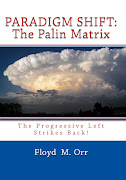
Mark McGinty at The Boogle gave my book Timeline of America an excellent review. Here is that review reprinted in its entirety.
300 Pages, Non-fiction history
4 1/2 out of 5 stars
Floyd Orr has succeeded in compiling a complete and completely off-beat history of American pop culture from before the first documented UFO sighting in 1644 to the failure of New Coke in 1985 to the rise of the Dixie Chicks as musical pundits. Timeline of America is not a typical history book – remember those 700-page clunkers that are heavy on war, atrocity and death? – Timeline is a book about the “fun stuff.” It is a celebration of the minutia that has defined our culture; the memorable movies, the power of television advertising, the rise and fall of popular music, sports as a consumable, popular cars, toys, computers and gossip. Somewhere between a non-fiction narrative and a list of dates, Timeline of America is a book like no other, a version of U.S. history told while sitting in the basement of That 70’s Show.
Organized into a series of narrative timelines that cover general history, movies, music, cars, television, sports, toys and “the nerd channel” it can either be read cover to cover (I did that) or used as a reference that allows you to skip to your favorite category or year without concern. It succeeds in connecting the dots and organizing all the white noise of pop culture into a tidy little capsule where all components can be viewed as pieces to a giant puzzle (I never realized that John Bonham and John Lennon died less than 90 days apart), and lets you see connections you never knew existed. Did you know that Starbucks and cell phones, two things that literally go hand-in-hand, both arrived in 1971?
Filled with interesting trivia (250 grave robbers were shot to death in 1900???) the book is meticulously researched and overflowing with nostalgia. It’s at its best when it covers the years when you grew up and resurrects countless suppressed memories (I had forgotten about the made-for-TV post-nuclear holocaust movie “The Day After”). Along with reminding you of all the great toys, shows and gossip of your youth, it’s also filled with many things you’ll be glad you missed – Heinz purple ketchup?
The strongest and most detailed prose can be found in the car section and Orr is clearly an enthusiast. I am not but I enjoyed learning how to determine the decade a car was produced by measuring the amount of chrome on its body. The details here are very convincing and Orr comes off as an expert. In fact, his knowledge of automobile history is so rich that it’s almost too much. It is packed with so many details that after awhile I was swimming in a sea of letters and numbers that looked almost like someone had taken a Scrabble game and tossed it on the floor with a stack of Uno cards (2000GT F150 Honda DX 1998). After awhile the makes and models didn’t mean much. Knowing that the 1998 Cobra had independent rear suspension was probably a bit too micro – I wanted to read more about Rod Stewart getting mugged and OJ fleeing from the cops in his Ford Bronco. And not a single mention of Back to the Future? Let’s hear less on specs and more on Nick Nolte’s hilarious DWI mug shot.
The movie section is pure nostalgia. Filled with movies I forgot that I loved and many I know I need to see it was great to read the yearly progression of movie history. The television section proved how quickly the arrival of the boob tube radically changed our innovation of snack foods. Can you image a dark age with no nacho-flavored Bugles or without mint and orange Kit-Kat bars? The music section is dedicated mostly it to rock music, categorizing and rightfully omitting rap, bubblegum and commercialized country music as “just plain trash.” Orr’s commentary includes such gems as “What is true rock and roll without talent, angst and rebellion? Without those things, all that is left is bad taste.” And he’s right on the money, strengthening his argument by referring to Shania Twain and Snoop Dog by their real names and not their corporate inspired monikers.
While some tidbits require further elaboration, like how reruns of Green Acres provided decades of entertainment for potheads, there will be some things that are missing entirely. No Kids in the Hall? What about The Daily Show? But Orr warns you that your favorites may not be found as not everything can be included. He alludes to a sequel and we hope we see one as the book ends with 2006 and almost begs for a second edition.
A masterpiece of nostalgia the book contains one nearly-fatal flaw: the cover. Clearly a symbol of the downhill slide music takes when corporate profits push art aside its tacky “road of life” image was clearly designed on a home computer. Normally I don’t go here and limit my reviews to the content of the book but in this case Orr risks sacrificing a wonderful read.
I’m reminded of the fictional rock band Spinal Tap, laboring over their album’s controversial cover and eventually releasing it in all black with no words or pictures. Let’s hope Orr doesn’t go that far when he produces his next edition but instead realizes that he has written a highly entertaining book – one that can be that much better.
Strengths: nostalgia!!! a fun, light read, painstakingly researched, filled with humor, well-written
Opportunities: not many but the car section gets bogged down in details, the cover
Will appeal to: movie buffs, car enthusiasts, history buffs, music lovers (especially rock music), people who enjoy gossip columns and anyone who loves their books American as apple pie.
Timeline of America: Sound Bytes from the Consumer Culture is available on amazon.
Reviewed by Mark McGinty, June 2009














